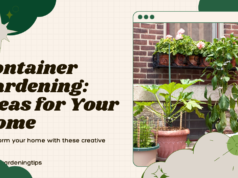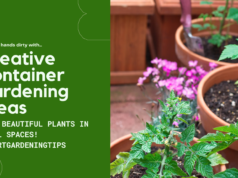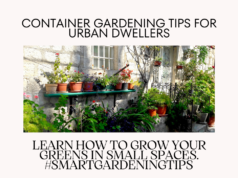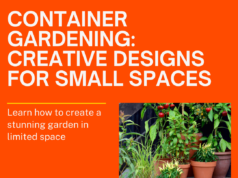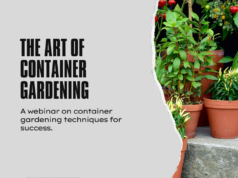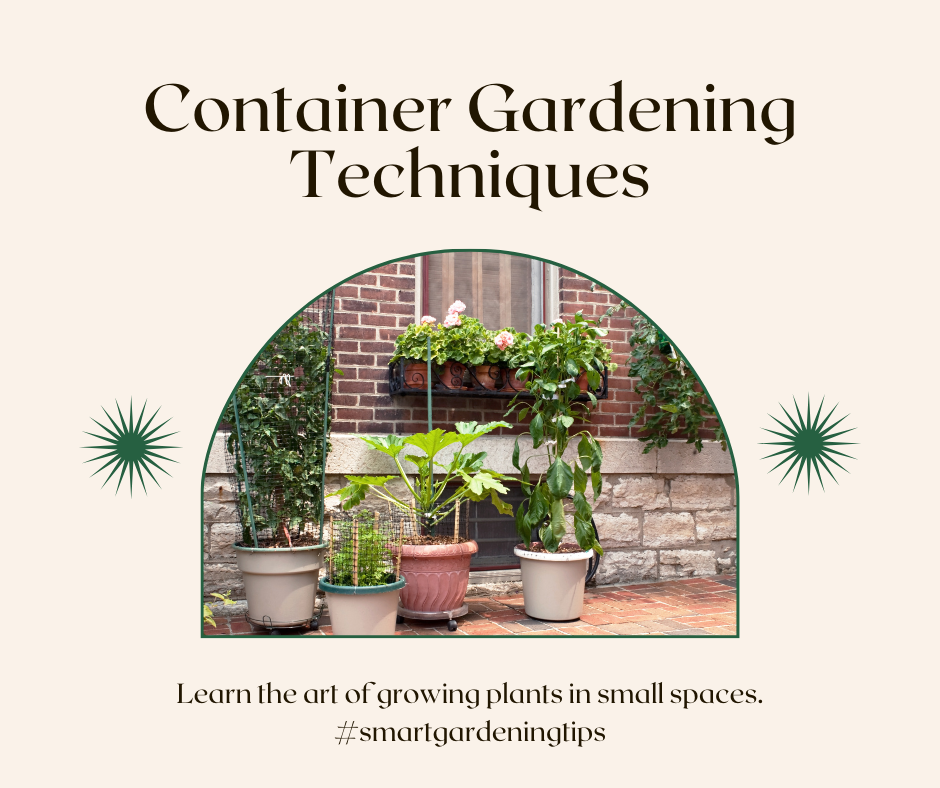
Welcome to our comprehensive guide on container gardening techniques. If you’re looking to add some greenery to your space or have limited outdoor area, container gardening is the perfect solution for you. In this section, we’ll explore how to select the right containers for your garden and provide insights to help you enhance your green space.
Key Takeaways:
- Choosing the right containers is crucial for successful container gardening.
- Consider the materials and sizes of containers when selecting the right ones for your plants.
- Understanding the ideal potting mix and its components is essential for plant health.
- Proper watering techniques and knowledge of potting mix drainage are important factors for plant growth.
- Having the right tools and accessories can make container gardening easier and more efficient.
Selecting the Right Containers for Your Garden
Choosing the ideal containers for your garden is crucial in creating a thriving and beautiful space. The right containers not only enhance the aesthetic appeal of your garden but also provide the necessary environment for plants to grow and flourish. In this section, we will discuss the different container materials and sizes available, as well as which containers are best suited for various plants.
Container Materials
When selecting containers for your garden, it’s important to consider the material they are made of. Different materials offer unique advantages and characteristics that can impact plant health and overall longevity. Here are some common container materials:
- Terra Cotta: This classic material offers excellent breathability and drainage. Terra cotta containers are great for plants that prefer drier soil conditions.
- Plastic: Lightweight and affordable, plastic containers are a popular choice for both indoor and outdoor gardens. They retain moisture well and are available in a variety of sizes and designs.
- Metal: Metal containers, such as steel or aluminum, are durable and resistant to extreme weather conditions. They can add a contemporary touch to your garden but may require additional insulation to protect plant roots from overheating.
- Wood: Wooden containers, like cedar or redwood, provide excellent insulation and a natural aesthetic. However, they may require regular maintenance to prevent rotting or damage.
Consider the specific needs of your plants and the environmental conditions of your garden when choosing the appropriate container material.
Container Sizes
The size of the container is crucial in providing enough space for plant roots to grow and develop. If the container is too small, plants may become root-bound or struggle to access adequate moisture and nutrients. On the other hand, if the container is too large, excess soil can lead to waterlogging and hinder root health.
Here is a general guideline for selecting container sizes based on plant types:
| Plant Type | Container Size |
|---|---|
| Herbs and small annuals | 6-8 inches in diameter |
| Medium-sized perennials and vegetables | 10-14 inches in diameter |
| Shrubs and small trees | 16-20 inches in diameter or larger |
These are general recommendations, and you may need to adjust based on the specific needs of your plants. Consider the mature size of the plant and its growth habit when selecting the size of the container.
By selecting the right materials and sizes for your containers, you can create an environment that promotes healthy plant growth and ensures the success of your garden.
Choosing the Ideal Potting Mix for Container Gardening
The success of your container garden largely depends on selecting the right potting mix. The ideal mix provides essential nutrients and promotes healthy root growth. Let’s explore how you can choose the perfect potting mix for your container gardening needs.
When it comes to potting mix components, there are a few key factors to consider. Firstly, the mix should provide adequate drainage to prevent waterlogging, which can lead to root rot. It should also retain enough moisture to keep the plants hydrated.
One crucial component of a high-quality potting mix is organic matter. It improves the soil’s structure, allowing for proper aeration and root growth. Examples of organic matter include compost, peat moss, and coconut coir.
To ensure your container plants receive the necessary nutrients, opt for a potting mix enriched with essential nutrients like nitrogen, phosphorus, and potassium. These nutrients play a vital role in plant growth, flowering, and fruit development.
Understanding Potting Mix Nutrient Content
When selecting a potting mix, it’s essential to understand the nutrient content. Look for labels that list the nutrient levels using the NPK ratio, which represents the percentages of nitrogen (N), phosphorus (P), and potassium (K) in the mix.
Tip: For most container plants, a balanced NPK ratio such as 10-10-10 or 14-14-14 is suitable.
In addition to the NPK ratio, some potting mixes may contain trace elements like calcium, magnesium, and iron. These micronutrients are essential for healthy plant growth and development.
It’s worth noting that different plants may have varying nutrient requirements. Some plants, like leafy greens, thrive in nitrogen-rich mixes, while flowering plants may benefit from a higher phosphorus content. Research the specific nutrient needs of your plants to select the best potting mix.
DIY Potting Mix vs. Store-Bought Mixes
You have the option to create your own potting mix or purchase a ready-made mix from your local garden center. DIY mixes allow you to customize the components according to your plant’s needs. However, they require sourcing and mixing various ingredients.
On the other hand, store-bought mixes are convenient and often formulated to meet a wide range of plant requirements. They typically contain a balanced blend of organic matter and nutrients, eliminating the need for additional amendments.
Comparison of DIY and Store-Bought Potting Mixes
| Factors | DIY Potting Mix | Store-Bought Potting Mix |
|---|---|---|
| Customization | High | Limited |
| Convenience | Requires sourcing and mixing ingredients | Ready to use |
| Consistency | May vary based on component quality | Uniform and standardized |
| Cost | Depends on ingredient selection and availability | Fixed price |
Note: Regardless of whether you choose a DIY or store-bought mix, always ensure it is suitable for your plant’s specific needs.
By selecting the ideal potting mix, you provide your container plants with the necessary support for healthy growth. Understanding potting mix components and nutrient content allows you to make informed decisions for your plants’ well-being.
Next, we’ll delve into proper watering techniques for container gardens, ensuring your plants receive the right amount of hydration while avoiding common issues like overwatering and underwatering.
Proper Watering Techniques for Container Gardens
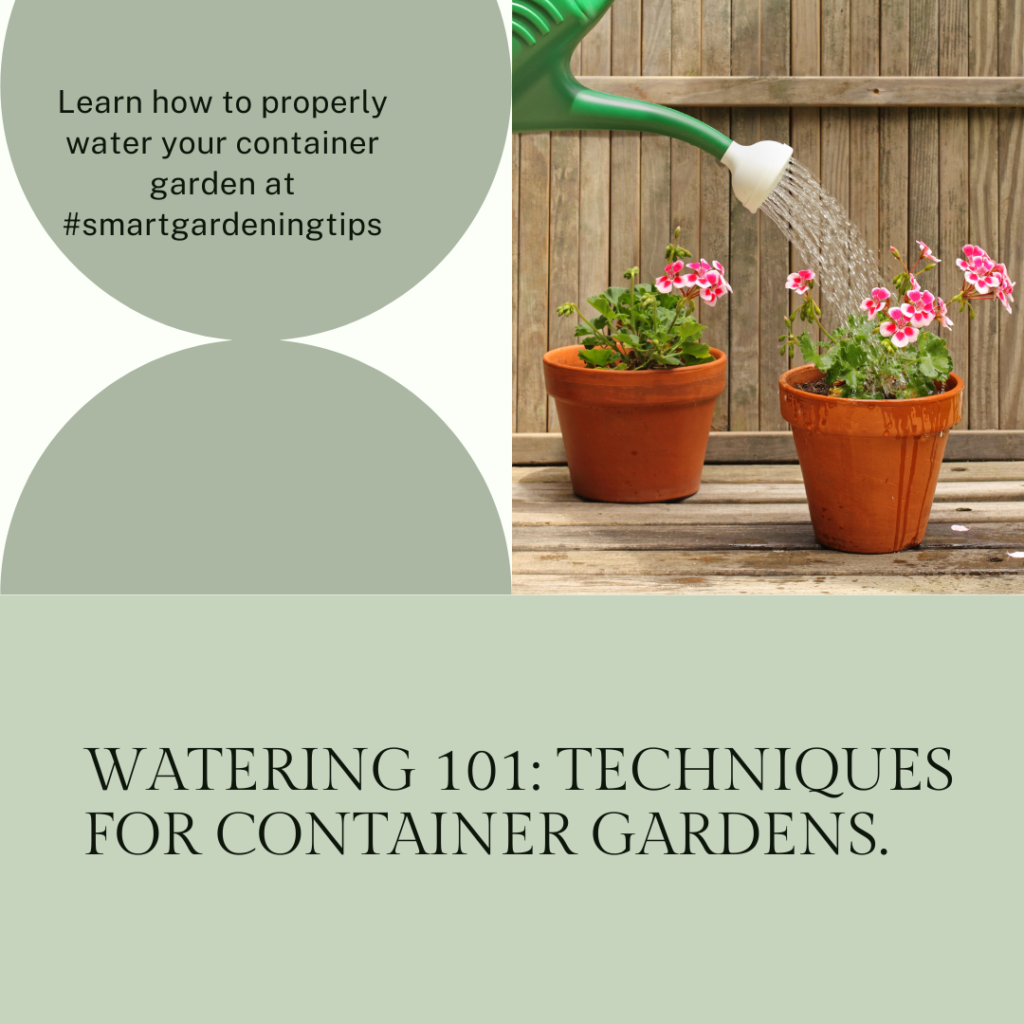
Ensuring proper watering techniques for your container gardens is essential for the health and vitality of your plants. Adequate water supply is necessary to keep them thriving and prevent issues such as wilting or root rot. In this section, we will discuss potting mix drainage and water retention, as well as provide guidelines for proper watering techniques.
Understanding Potting Mix Drainage and Water Retention
The potting mix you use in your containers plays a crucial role in determining how well your plants retain and drain water. It’s important to choose a high-quality potting mix that strikes a balance between adequate drainage and water retention.
Potting mixes containing organic materials such as peat moss or coconut coir are excellent choices for container gardens. These materials absorb and retain moisture while allowing excess water to drain away, preventing waterlogged roots. Additionally, incorporating perlite or vermiculite into the potting mix can improve drainage and aeration.
It’s worth noting that different types of plants have varying water requirements. Some plants, like succulents, prefer drier conditions and require less frequent watering, while others, such as tropical plants, need consistent moisture. Make sure to select the appropriate potting mix for the specific needs of your plants to ensure optimal water management.
Proper Watering Techniques for Different Types of Plants
When it comes to watering container gardens, it’s important to follow specific techniques tailored to the type of plants you’re growing. Proper watering practices can help prevent overwatering, underwatering, and other related issues.
Here are some guidelines for watering different types of plants:
- Moisture-loving plants: Plants that prefer consistently moist soil, such as ferns or peace lilies, should be watered when the top inch of the potting mix feels slightly dry. Avoid letting the soil become bone dry or waterlogged.
- Drought-tolerant plants: Plants like succulents or cacti thrive in drier conditions and require less frequent watering. Water these plants only when the potting mix is completely dry, typically every 1-2 weeks depending on the environmental conditions.
- Temperature and humidity: Adjust your watering frequency based on environmental factors such as temperature and humidity. Hot and dry weather may necessitate more frequent watering, while cooler and more humid conditions may require less frequent watering.
Pro Tip: To determine if your plants need watering, gently stick your finger about an inch into the potting mix. If it feels moist, hold off on watering. If it feels dry, it’s time to water your plants.
Remember, it’s better to slightly underwater than to overwater your container plants. Overwatering can lead to root rot and other fungal or bacterial diseases. Finding the right balance will contribute to healthy and thriving plants in your container garden.
By understanding potting mix drainage, water retention, and implementing proper watering techniques specific to your plants’ needs, you will ensure a flourishing container garden. Now that you have the knowledge, go ahead and water your plants with confidence!
Essential Container Gardening Tools and Accessories
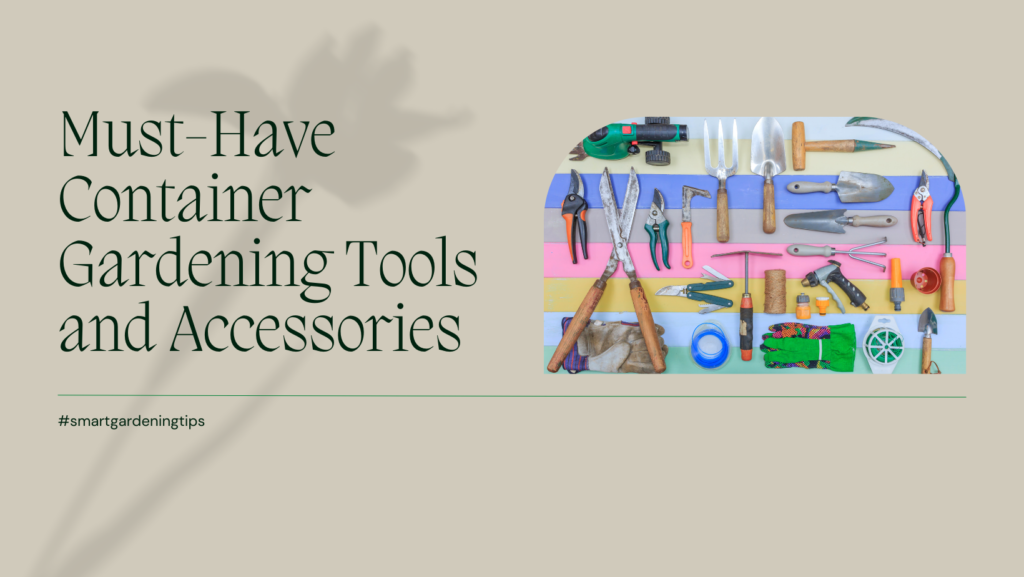
When it comes to container gardening, having the right tools and accessories is essential for success. These must-have items will make your gardening experience easier, more enjoyable, and more efficient. From planting to maintenance, here are some essential tools and accessories to consider for your container garden:
1. Garden Gloves
Protect your hands while working in the garden with a sturdy pair of garden gloves. They will shield your skin from dirt, thorns, and other potential hazards.
2. Hand Trowel and Pruners
A hand trowel is perfect for planting and transplanting small plants and flowers in your containers. Pair it with a good pair of pruners to trim and shape your plants with precision.
3. Watering Can or Hose with a Nozzle
Proper watering is crucial for the health of your container plants. Invest in a watering can or a hose with a nozzle attachment to deliver a gentle and controlled stream of water directly to the roots.
4. Soil Scoop or Small Shovel
Make filling your containers with potting mix a breeze by using a soil scoop or a small shovel. This tool will help you efficiently transfer soil without making a mess.
5. Plant Labels
Keep track of what you’ve planted by using plant labels. These small tags or stakes can be inserted into the soil and labeled with the names of your plants. This way, you can easily identify and care for each plant accordingly.
6. Plant Support and Trellis
If you’re growing climbing plants or those with sprawling branches, consider using plant supports or a trellis. These accessories will provide necessary support and help your plants grow upright and beautifully.
7. Fertilizer and Plant Feed
Give your container garden a nutritional boost with a high-quality fertilizer or plant feed. These products ensure your plants receive the necessary nutrients for healthy growth and abundant blooms.
“Investing in the right tools and accessories for your container garden will save you time and effort in the long run.”
8. Pest Control Solutions
Keep pesky insects and pests away from your container plants with organic pest control solutions. From neem oil to insecticidal soaps, these chemical-free options will protect your plants without harming the environment.
9. Garden Apron or Tool Belt
Stay organized and keep your essential tools within reach by wearing a garden apron or tool belt. These accessories have multiple pockets to hold your gardening tools and make your gardening sessions more efficient.
10. Plant Caddy or Rolling Tray
If you have larger or heavier containers, consider using a plant caddy or a rolling tray. These accessories allow you to easily move your plants, making it convenient to rearrange your garden or protect your plants from changing weather conditions.
11. Garden Pruning Scissors
For precise trimming and shaping of your plants, garden pruning scissors are a must-have. They are ideal for intricate pruning tasks and taking care of delicate plants.
Investing in these essential container gardening tools and accessories will make your gardening journey a breeze. They will help you maintain your plants, maximize your space, and achieve impressive results.
| Tool/Accessory | Description |
|---|---|
| Garden Gloves | Protective gloves for hands while working in the garden |
| Hand Trowel and Pruners | Tools for planting, transplanting, and pruning |
| Watering Can or Hose with a Nozzle | For controlled and efficient watering |
| Soil Scoop or Small Shovel | For easy transfer of potting mix |
| Plant Labels | To keep track of planted species |
| Plant Support and Trellis | For supporting climbing and sprawling plants |
| Fertilizer and Plant Feed | For providing essential nutrients to plants |
| Pest Control Solutions | Organic options for pest control |
| Garden Apron or Tool Belt | For easy organization and accessibility of tools |
| Plant Caddy or Rolling Tray | For easy movement of larger containers |
| Garden Pruning Scissors | For precise trimming and shaping |
Managing Pests and Diseases in Container Gardens
When it comes to container gardens, pests and diseases can pose a challenge to the health and vitality of your plants. However, with the right knowledge and practices, you can effectively manage these issues and maintain a thriving garden. In this section, we will explore common pests and diseases that affect container plants and provide tips on how to control them using natural, chemical-free methods.
Common Pests and Diseases in Container Plants
Container plants are susceptible to a variety of pests and diseases. Some common culprits include:
- Aphids: These small insects suck the sap from plants, causing stunted growth and distorted leaves.
- Spider mites: They are tiny pests that feed on plant juices, leaving behind a web-like substance and causing yellowing leaves.
- Fungal diseases: Powdery mildew and root rot are common fungal infections that can affect the foliage, stems, and roots of container plants.
Identifying the specific pests and diseases affecting your plants is vital for effective control. Regularly inspect your plants for signs of damage or distress and take action promptly.
Natural and Chemical-Free Pest Control Methods
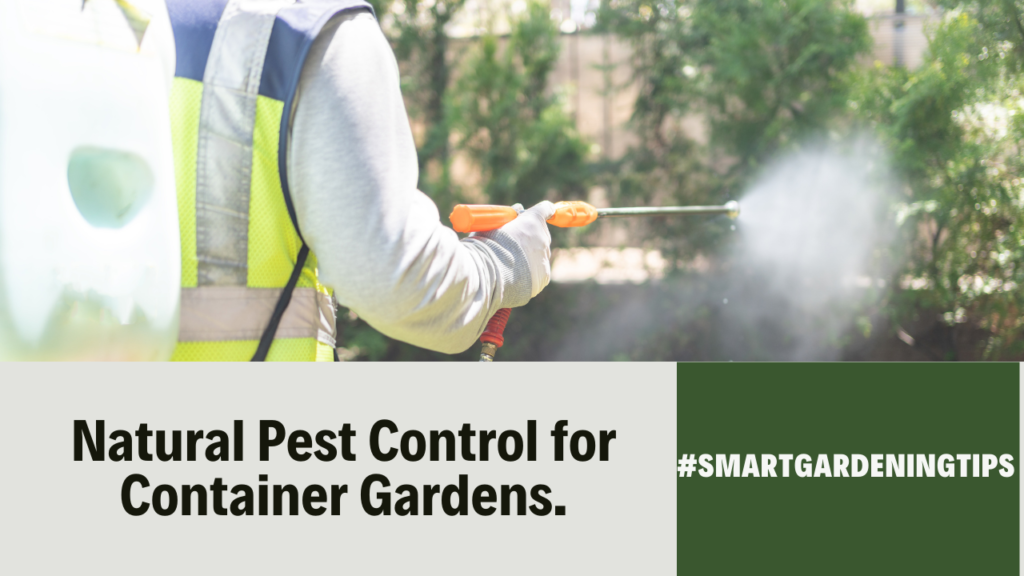
When it comes to managing pests and diseases in container gardens, natural and chemical-free methods are often the safest and most environmentally friendly options. Here are some effective strategies:
- Handpicking: For small infestations, manually remove pests like aphids and spider mites by hand. Be sure to crush or dispose of them away from your plants.
- Beneficial insects: Introduce beneficial insects like ladybugs and lacewings to your container garden. They are natural predators of common pests and can help control their populations.
- Neem oil: Neem oil is a natural pesticide derived from the neem tree. It is effective against a wide range of pests and has minimal impact on beneficial insects.
- Proper sanitation: Regularly clean your containers, tools, and surrounding areas to prevent the buildup of pests and diseases. Dispose of any infected plant debris properly.
Remember, prevention is key when it comes to managing pests and diseases. Ensure your container plants receive adequate sunlight, proper watering, and good airflow to promote healthy growth and reduce the risk of infestations. Additionally, avoid over-fertilizing, as excessive nutrients can attract pests.
By following these natural and chemical-free pest control methods, you can protect your container plants from common pests and diseases while maintaining an eco-friendly garden.
Creative Plant Combinations and Design Ideas for Container Gardens
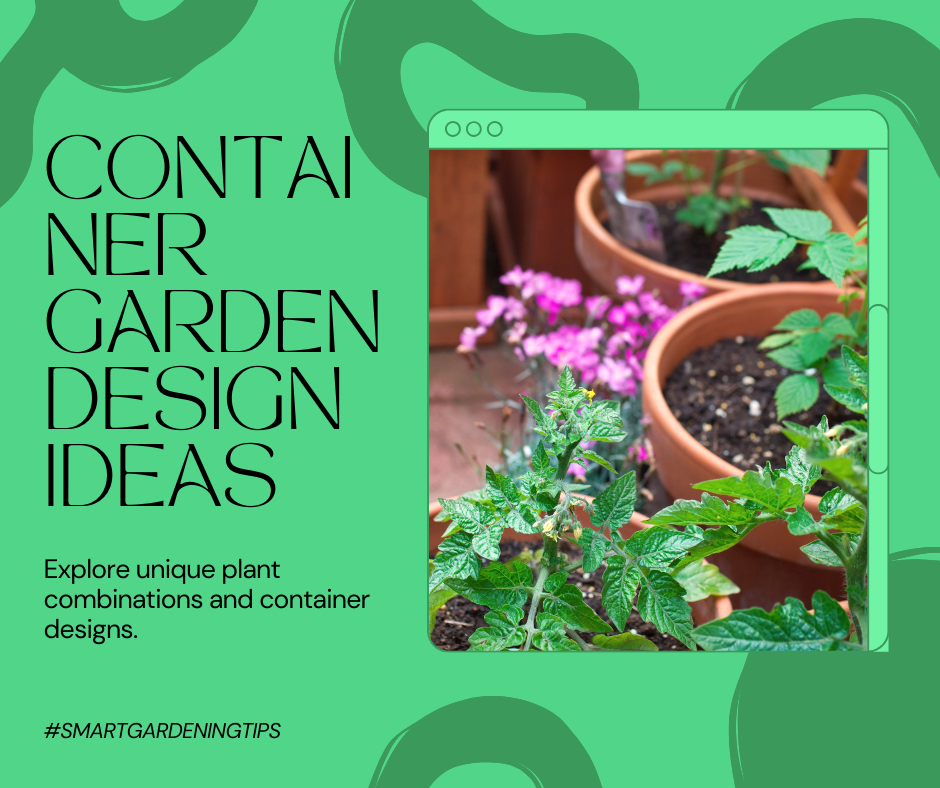
Creating a stunning container garden is all about selecting the right plant combinations. By strategically arranging thrillers, fillers, and spillers, you can achieve a visually appealing and harmonious design. Let’s explore some creative ideas and popular plant combinations that will elevate your container garden to new heights.
Thriller, Filler, and Spiller Plant Combinations
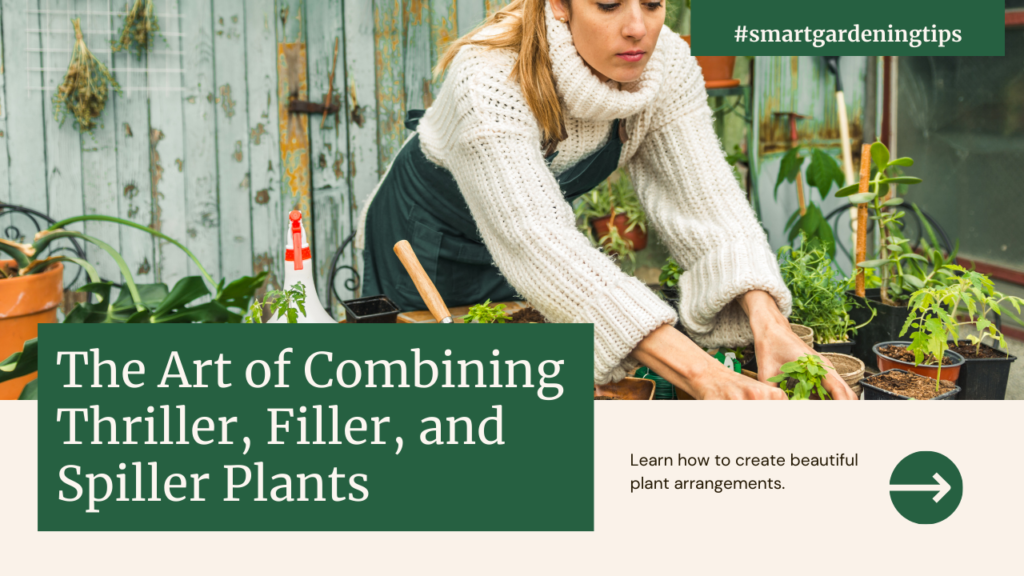
One of the most effective ways to design a container garden is by utilizing the thriller, filler, and spiller technique. This technique involves incorporating plants with different growth habits and heights to create a dynamic and balanced display.
| Thrillers | Fillers | Spillers |
|---|---|---|
| Grass-like plants such as Phormium or Dracaena | Petunias, impatiens, or begonias | Ivy, creeping Jenny, or cascading lobelias |
| Dahlias or canna lilies | Lobelia, sweet alyssum, or geraniums | Trailing verbena, ivy geraniums, or sweet potato vines |
| Spiky ornamental grasses | Moss rose, marigolds, or zinnias | Wave petunias, bacopa, or calibrachoas |
By incorporating these different plant types, you create a visually dynamic container garden with plants that complement and enhance each other.
Inspiring Design Ideas
- Monochromatic Beauty: Create a sophisticated look by selecting plants in various shades of the same color. For example, combine different purple hues, such as lavender, petunias, and sweet potato vines.
- Tropical Paradise: Transport yourself to a tropical oasis by combining bold foliage plants like banana trees or elephant ears with vibrant tropical flowers like hibiscus or bird of paradise.
- Edible Delights: Design an herb container garden by combining aromatic basil, fragrant rosemary, and versatile parsley. Not only will it look beautiful, but you’ll also have fresh herbs at your fingertips for cooking.
Remember, when creating plant combinations, consider the growing conditions for each plant and group together those with similar water and light requirements. This will help ensure the success of your container garden.
Vertical Gardening Techniques for Compact Spaces
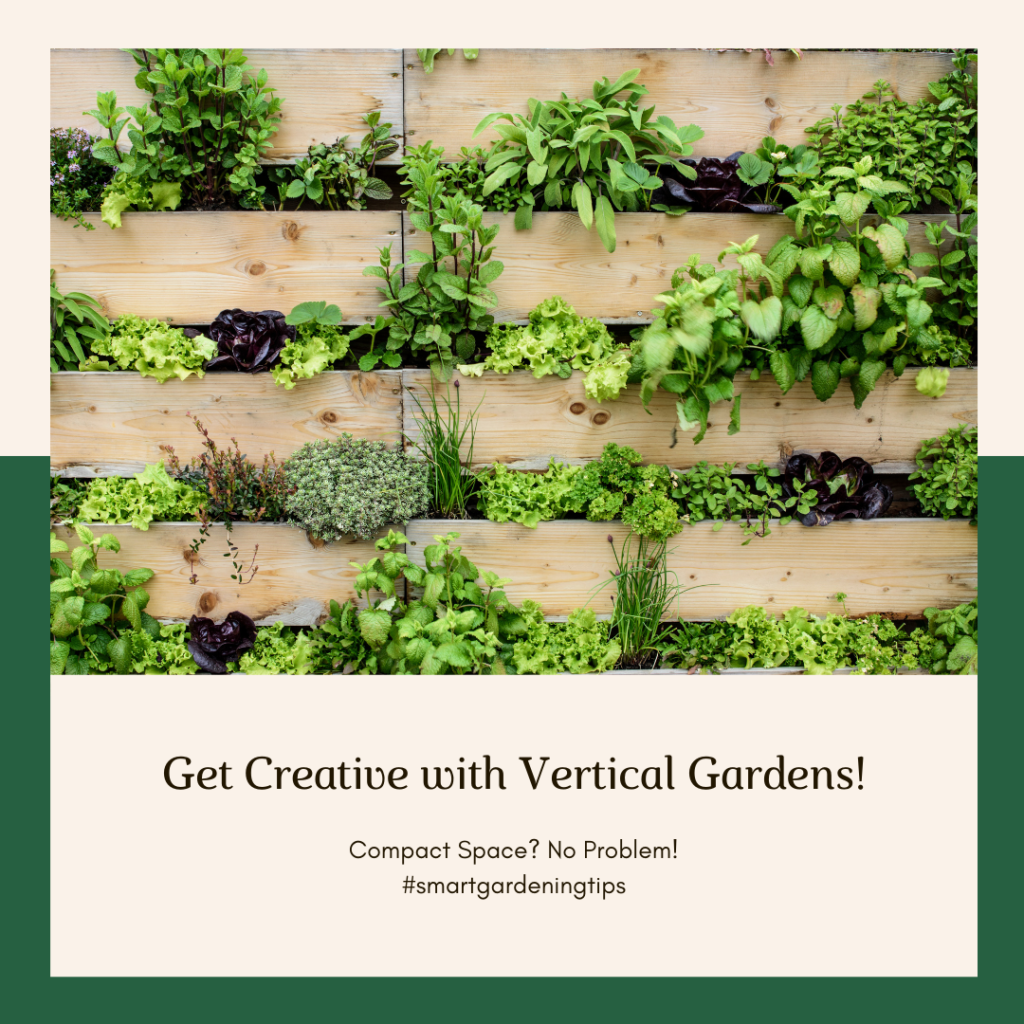
If you have limited space in your garden, vertical gardening offers a fantastic opportunity to maximize your growing area. By utilizing vertical space, you can cultivate a beautiful and vibrant garden, even in the smallest of spaces. In this section, we will explore various vertical gardening techniques and ideas to help you create an efficient and visually appealing garden.
One popular vertical gardening technique is the use of trellises and arbors. These structures provide support for climbing plants such as tomatoes, cucumbers, and beans, allowing them to grow vertically instead of spreading across the ground. Vertical growth not only saves space but also makes harvesting easier. Consider installing trellises or arbors against walls, fences, or in raised beds to create a stunning vertical garden.
Vertical Garden Towers
Another ingenious way to maximize space is by using vertical garden towers. These towers are typically made of stacked pots or planters, creating a vertical structure that allows you to grow multiple plants in a compact area. You can plant a variety of herbs, vegetables, or flowers in each tier of the tower, creating a stunning display that saves valuable ground space.
| Advantages of Vertical Gardening Techniques for Compact Spaces: |
|---|
| Maximizes space utilization |
| Creates an aesthetic focal point |
| Allows easy access for maintenance and harvesting |
| Provides better airflow and sunlight exposure |
One of the advantages of vertical gardening is its ability to create an aesthetic focal point. Vertical structures can add height and visual interest to your garden, making it more appealing and inviting. Additionally, vertical gardening allows easy access for maintenance and harvesting, as plants are easily reachable without bending or crouching.
Vertical Wall Gardens
If you have limited floor space, vertical wall gardens are an excellent solution. You can create a stunning green wall by attaching planters or pockets to walls or fences. This technique not only maximizes space utilization but also provides better airflow and sunlight exposure for your plants. Vertical wall gardens are perfect for growing a variety of plants, including herbs, succulents, and small ornamentals.
Vertical gardening techniques enable you to bring life and beauty to even the smallest of spaces. From trellises and towers to wall gardens, there are numerous methods to transform your compact area into an abundant and flourishing oasis.
In conclusion, vertical gardening is a game-changer for compact spaces. By employing innovative techniques and ideas, you can elevate your garden and enjoy a bountiful harvest, even with limited room. Whether you choose trellises, towers, or wall gardens, the key is to maximize your space while creating an aesthetically pleasing environment. Embrace the vertical and watch your garden thrive!
FAQ
Q. How do I select the right containers for my garden?
A. When choosing containers for your garden, consider the material and size. Opt for sturdy materials like ceramic, plastic, or fiberglass. Select containers that are appropriate for the plant’s size and provide enough room for root growth.
Q. What is the ideal potting mix for container gardening?
A. The ideal potting mix should have good drainage and water retention capabilities. It should contain organic matter, such as compost or peat moss, along with components like perlite or vermiculite for aeration. Additionally, consider using potting mixes that contain essential nutrients for plant growth.
Q. How do I water container gardens properly?
A. Water container gardens when the top inch of the potting mix feels dry. Ensure adequate drainage while watering, and allow the excess water to drain from the bottom of the container. Adjust the watering frequency based on the plant’s needs and environmental conditions.
Q. What are the essential tools and accessories for container gardening?
A. Essential tools for container gardening include a trowel, pruning shears, and a watering can or hose. Useful accessories include plant stands, trellises for climbing plants, and self-watering containers for convenience.
Q. How can I manage pests and diseases in container gardens?
A. To manage pests and diseases naturally, regularly inspect your plants for signs of infestation or disease. Use organic pest control methods like neem oil or insecticidal soaps. Proper plant hygiene, such as removing dead foliage, can also help prevent the spread of diseases.
Q. What are some creative plant combinations for container gardens?
A. To create visually appealing container gardens, consider using thriller, filler, and spiller plant combinations. Use a tall, eye-catching plant as the thriller, medium-sized plants as fillers to add texture, and trailing plants as spillers to cascade over the edges of the container.
Q. How can I utilize vertical gardening techniques in compact spaces?
A. Vertical gardening is a great space-saving solution. Utilize techniques like wall-mounted planters, hanging baskets, and trellises to grow plants vertically. This allows you to maximize space while creating a lush garden in even the smallest areas.
Conclusion
In conclusion, container gardening techniques provide a fantastic opportunity to transform your green space. By following the tips and techniques shared in this article, you can create a thriving and visually stunning container garden.
Experimentation is the key to success in container gardening. Try different plant combinations to add variety and interest to your garden. Consider including a mix of thrillers, fillers, and spillers to create dynamic and eye-catching displays.
Additionally, selecting the right containers and potting mix is crucial for the health and growth of your plants. Choose containers that suit the specific needs of your plants, taking into account material and size. Ensure you use a high-quality potting mix that provides the necessary nutrients and promotes good drainage and water retention.
Lastly, effectively managing pests and diseases is essential for maintaining the vitality of your container garden. Explore natural and chemical-free methods to control common pests and diseases, ensuring the well-being of your plants.
Embark on your container gardening journey with confidence, knowing that with the right techniques and attention, you can create a vibrant and thriving garden that will bring you joy for years to come. Happy gardening!


